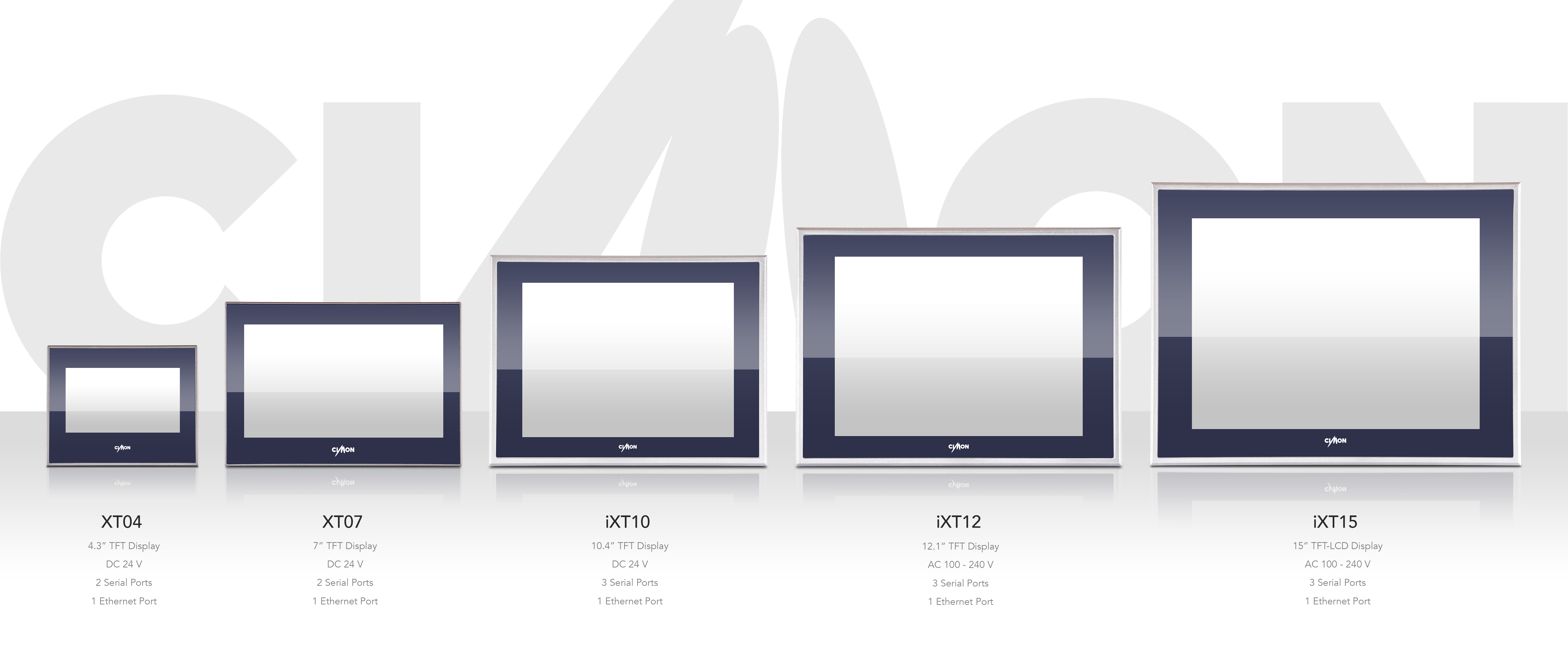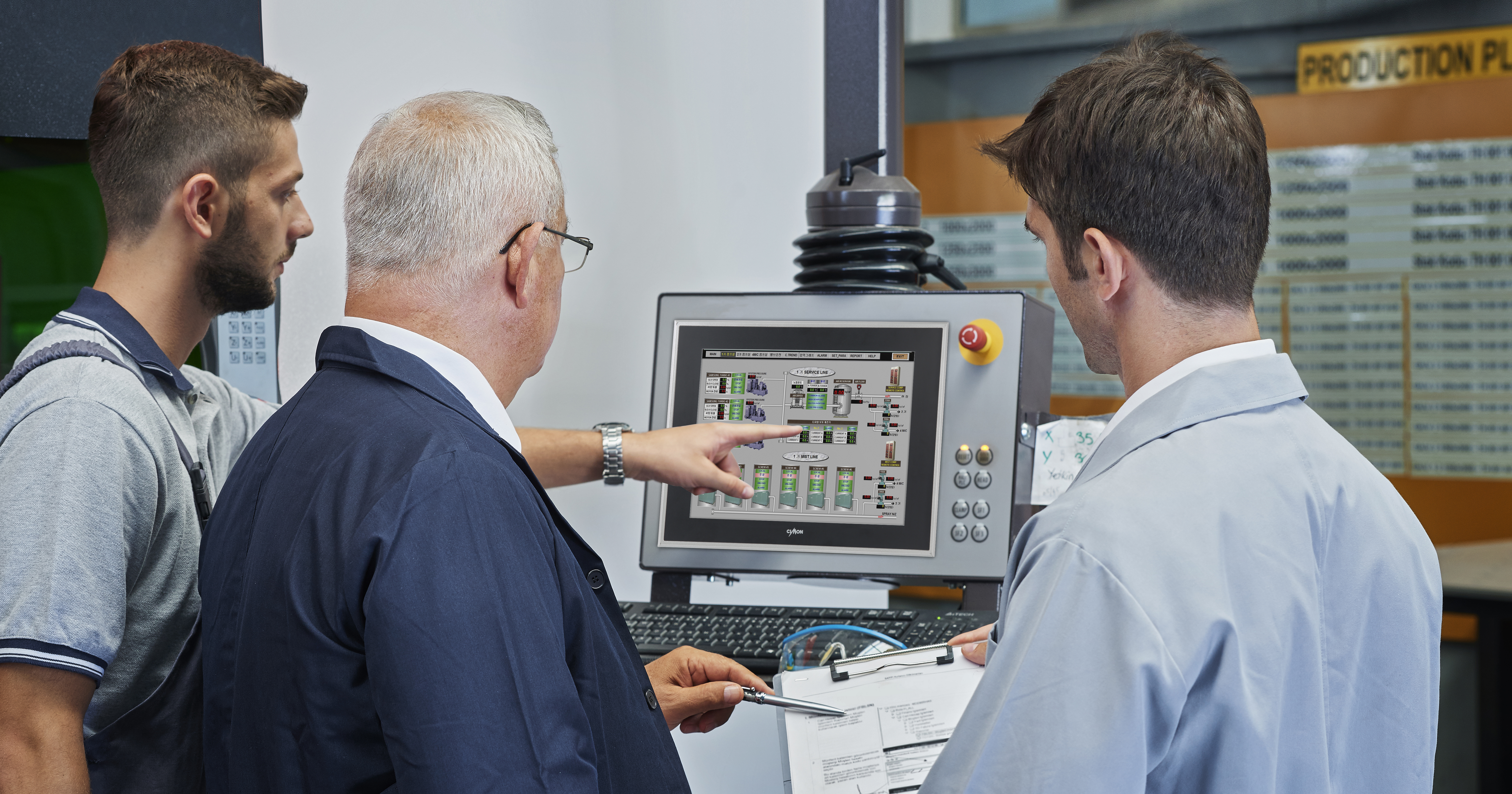What is Industry 4.0 & How Will it Change the World?
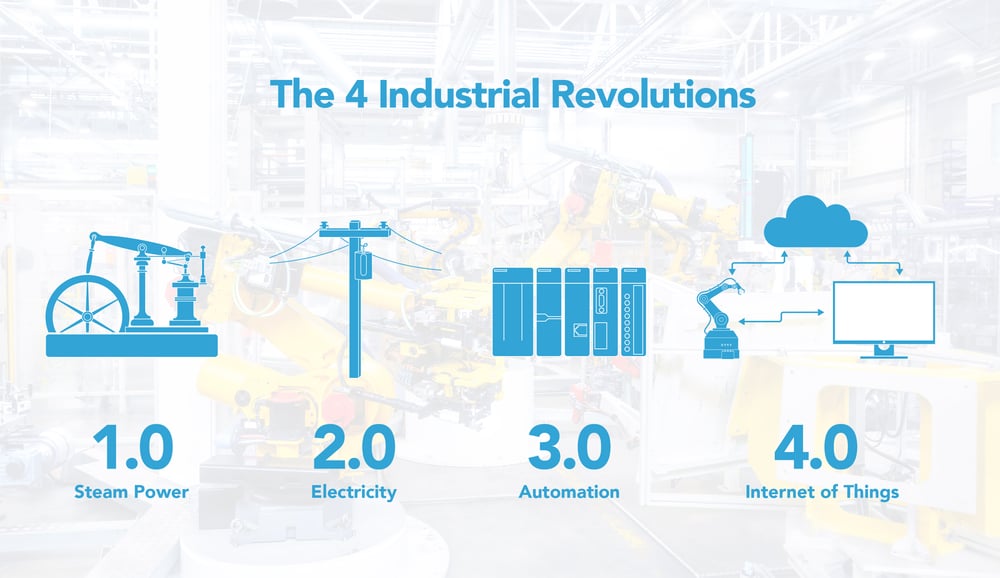
The first three industrial revolutions—broadly characterized by mechanization, electrification, and computerization—each broke down barriers in the production cycle. They not only made work of the day easier, but also opened up completely new possibilities. After all, when people no longer have to think about old challenges, they can instead focus on exploring new ideas.
Unlike previous industrial revolutions, Industry 4.0 is not so much defined by one or two physical inventions. This time, the innovation comes more from a set of concepts that bring existing technologies together. Computers and robots can already (at least in theory) perform most of the tasks that take place in a factory. The greater challenge comes from managing the people, processes, and machines that make up an industrial workflow. Industry 4.0 is about minimizing the difficulty of this management, while simultaneously maximizing the output using real-time insights and adjustments.
Many new technologies make this possible, mainly in the form of software and computing paradigms. While each technology is significant in its own right, it is the way they work together that makes this revolution unique. Loosely, we can split Industry 4.0 into three big ideas: communication, automation, and integration. By putting these together, makers of all kinds can accomplish more than ever before.
Communication: Getting Data Where It Needs to Go

While industrial communication has been around for decades, the landscape is rapidly changing. On the physical side, high-speed Internet allows connections to span not only across factory floors, but between companies and even countries. Furthermore, the reduced cost of computing power means that most production machines can utilize an Ethernet port. This has resulted in high-speed, low-latency connections that are easy to set up and configure.
On the conceptual side, free and open source protocols have enabled equipment from different manufacturers to work together with minimal friction. In addition to one-to-one protocols like Modbus TCP and Ethernet/IP, there are now many-to-many options such as OPC UA and MQTT. These utilize a central server (or “broker” for MQTT) to keep track of where information needs to go, thereby avoiding redundant traffic and processing time. As a bonus, nodes and data points can easily be modified without reconfiguring the existing network.
Despite these advancements, anyone with a smartphone knows that there is no shortage of data on the Internet. A much more significant problem is finding the data you need when you actually need it. Sure, you may be able to see 3,000,000,000 search results for “cat” at the touch of a button, but when you want to learn about one specific cat, things get trickier.
For an industrial workflow, the principle remains the same: Companies want their data to be as accessible as possible, but also do not want to bother with storing, transferring, sorting through, and managing extraneous information. This is a notoriously complex problem that gets harder for larger systems. Much of this has been solved via improvements to server technology, with new developments seemingly every day.
Any time a packet of data is sent from one place to another, it must be processed—either at the end points or by an intermediary server. These days, servers are not only faster and cheaper, but also easier than ever to set up. Previously, each business needed to maintain its own physical servers. This required configuring the operating system and software, paying for equipment and electricity, and hiring specialized employees. Now, with cloud computing, there are multiple vendors who can do all of this for you automatically.
With remarkably little overhead, anybody can rent a virtual server and simply point their data at it. Advanced users can configure and optimize to their heart’s content, while non-experts can quickly get up and running. A good cloud server also provides improved redundancy, security, flexibility, and scalability when compared to a traditional one. Finally, the low cost of storage means companies can keep detailed records for many years, and then access any record at a moment’s notice.
Automation: Making Data Useful
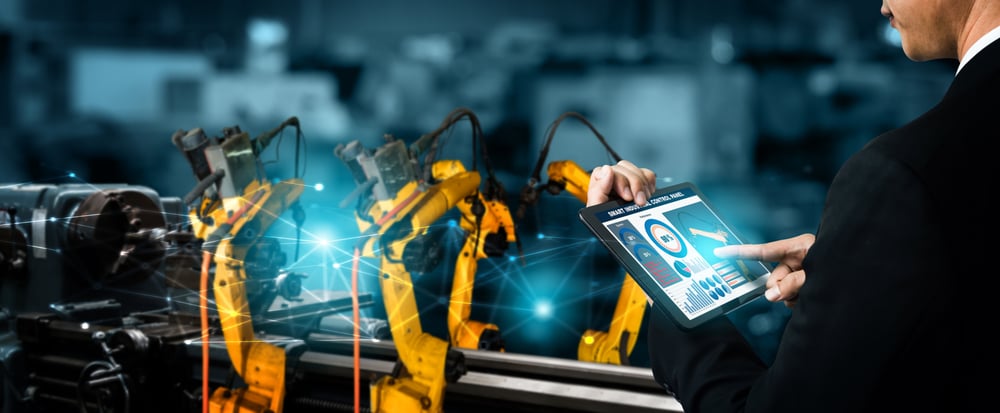
So say a company has millions of data points that are accessible anytime and anywhere. So what? In order to be useful, the information must be processed down into meaningful and actionable instructions. Analysts and data scientists are essential for developing long-term plans, but an efficient system needs to make complex decisions in real time. This is where modern AI excels.
While most people can pick up on decently complex patterns (say, an electrical grid using more power during summer months), quantifying those patterns is much more difficult, and optimizing choices based on them is an even bigger challenge. Enter machine learning. Given a set of past inputs and outputs (called training data), a machine learning algorithm can fine-tune itself to make better predictions over time. Each time the algorithm makes a guess, the outcome can be used to either encourage or discourage behaviors implicitly. As the amount of training data increases, the results improve in accuracy.
A key benefit is that the programmer does not need to understand which patterns are relevant, nor define a set of algorithms. As long as the digital input describes the system accurately, a neural network can learn to see surprisingly subtle details. For example, a signal may look like random noise at first glance, but could contain useful frequency information. Or, there might be hidden correlations that are too context-specific for an analyst to single out on their own. To understand just how powerful this method can be, take a look at DeepMind’s AlphaGo, which was able to thoroughly best some of the world’s greatest Go champions.
AI has also accelerated the capabilities of industrial robots. Traditional machinery is well-suited for repetitive, high-precision actions, but many tasks are impossible to define as a set of simple, repeatable steps. Machine learning and other methods allow robots to act based on loosely defined behaviors, rather than on rigid instruction sets. Now, robots can interact with irregularly shaped objects and terrain, learn new behaviors over time, and adapt to unexpected changes. On top of this, robots offer many advantages over traditional labor, including greater speed and accuracy, reduced downtime, and the ability to work in dangerous conditions.
It is important to think of automation not just as a way to reduce overhead, but as a source of value creation. Instead of minimizing labor costs, companies should strive to maximize the effectiveness of their resources, including their employees. Many tasks are simply too dangerous or strenuous for workers to perform by hand; in these cases machines can provide new opportunities. Furthermore, studies show that human/robot teams are significantly more productive than ones with only humans or only robots. This has helped popularize the notion of collaborative robots, or “cobots,” which will likely transform our understanding of what human-machine interactions can look like.
Integration: A Cohesive Whole

Automation is by no means limited to intricate or data-driven domains. It is difficult to replace the raw efficiency and dependability of an assembly line. For this reason, PLCs (programmable logic controllers) and other low-level control equipment are likely to stick around for decades to come. However, the roles these devices play are changing as production decisions move away from the factory floor. In modern industry, entire processes must be able to react to real-time changes.
Fortunately, not every component in a system needs to know the high-level objective. When a pianist wants to play a note, for example, they don’t think “move the right hand into place, lower the first joint of the ring finger, wait for resistance from the key, then raise the joint again”. Instead, the pianist just imagines the note, and muscle memory handles the rest. In the same way, a well-designed manufacturing system has no need to micromanage every PLC and device. As long as each piece handles its own responsibilities, the upper levels can focus on management and supervision.
The goal of integration is not to make every data point accessible to every device, but rather to form meaningful connections between processes. Ideally, each process should be self-contained and simple to trigger. Modularization shifts design away from timing-based instructions, and towards a network of asynchronous events. This not only makes day-to-day operations more flexible, but also facilitates making changes in the future. As industry practices and consumer expectations evolve, this kind of adaptability becomes more and more valuable.
One way to utilize this design is by incorporating microservices. Whereas monolithic programs process information all within the same scope, microservices only perform a single specialized task. Services are then connected together using APIs (Application Programming Interfaces), which can communicate over the Internet. Typically, microservices are operated on virtual servers that can scale up based on demand. This helps prevent bottlenecks and system-wide bugs, and makes adding new functions relatively straightforward.
Though it may seem paradoxical, breaking things down into their fundamental parts makes the bigger picture easier to manage. In Industry 4.0, this methodology extends far beyond the factory floor. From enterprise-level strategy, to order management and shipping, to customer relations, everything can be part of the same conceptual network. The advantage is that businesses can focus on their customers and products, instead of on middle management and implementation details.
The Challenge and the Reward
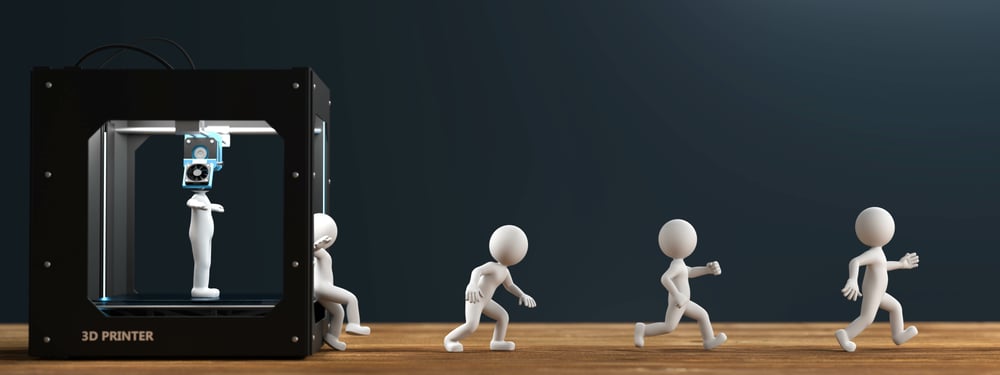
While all of this looks great on paper, there are sizable challenges for those hoping to embrace Industry 4.0. Setting up an automation system takes a considerable amount of work, and getting the most out of any technology requires changes in thinking. With that said, the potential benefits are absolutely worth it. Those who are willing and able to adapt will be the most successful in the future.
To wrap things up, let’s look at a hypothetical business that adopts the ideas of Industry 4.0. Say a customer wants a custom-made object that they cannot find in stores. They go to a website (or perhaps a smartphone app) where an interactive AI walks them through the steps of 3D design. When the design is settled, the customer places their order, which is instantly sent to a 3D printing factory. There, the next available printer begins work on the object, with a live video feed that lets the customer watch the object being made.
Once printing is complete, a robotic arm collects the object and brings it to a prep area, where the object can be given an outer finish, decorated, or combined with other parts. From there, the object is packaged and sent out for shipping. Of course, the customer can check the status in real time, and can optionally choose next-day or even same-day delivery. Satisfactory designs can then be saved for future use or uploaded to the community marketplace, which gives the designer a royalty when other users buy a copy.
This exact idea still has a few hurdles, mostly due to current limitations of 3D printing. However, the gaps are small enough that dedicated research is likely to pay off within a few years. The same is true for many other emerging technologies: quantum computing, molecular engineering, 3D imaging, and assistive AI are all either on or just past the brink of commercial success. When combined with automation, each of these will become a powerful disruptive force. Research has always been a long-term investment, but now both the challenge and the reward are greater than ever before.
What has not changed is the fact that opportunities arise for those who plan ahead. Not every business needs to be technology-based, but every entrepreneur should thoroughly consider how their market will change due to technology. For consumers, the availability of novel and affordable services is about to explode. For leaders and innovators, this is a chance—and a responsibility—to effect positive societal change. All in all, enterprises and laypeople alike have good reason to be optimistic about the future of industry.

